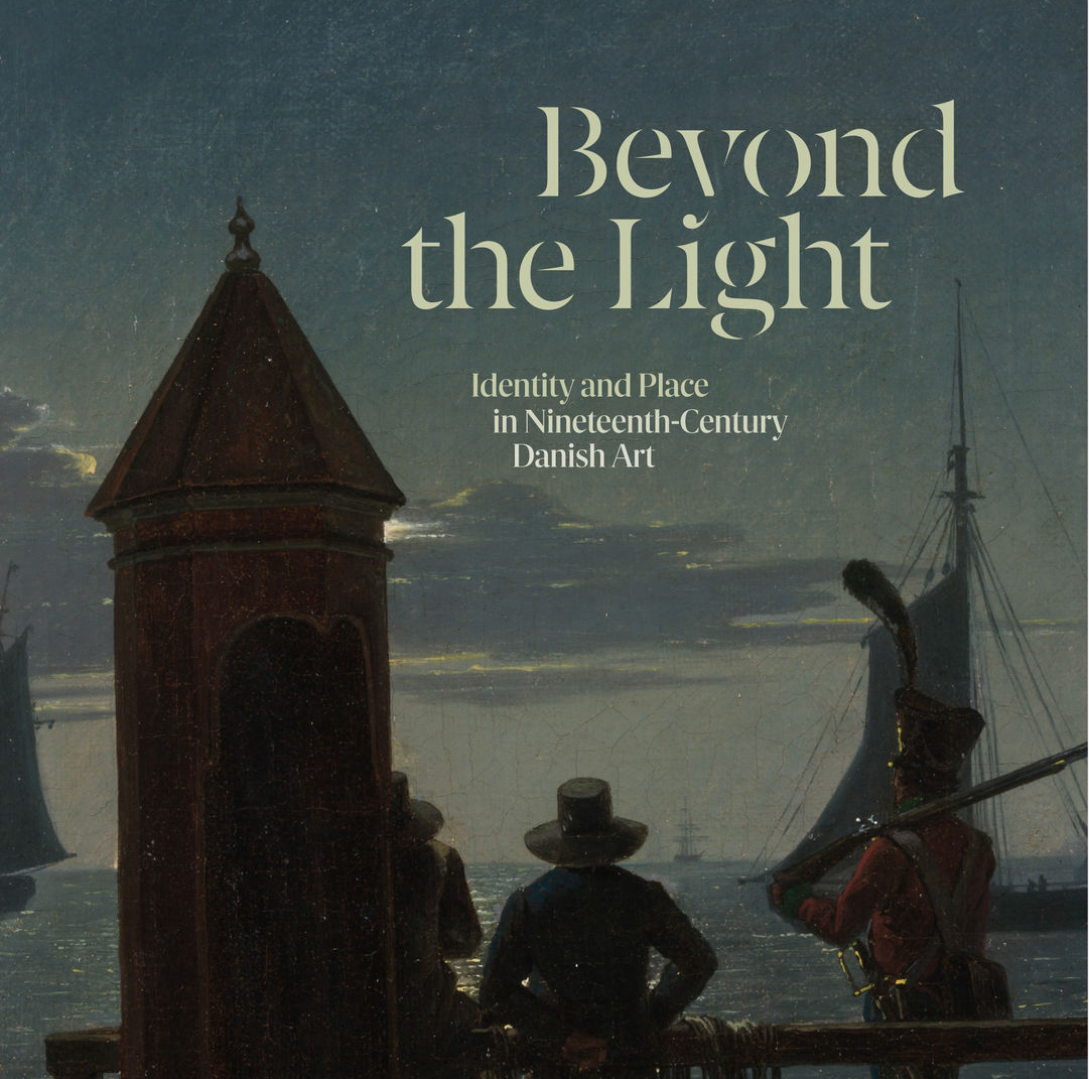
The third destination of our Met Museum art extravaganza was Beyond the Light – Identity and Place in Nineteenth-Century Danish art.
Plenty of light and lots of water. Plus wonderful drawings and paintings of Denmark, ancient ruins, lonely figures on beaches, ships, harbors, woodlands, portraits, and empty rooms.
The exhibit overview includes the following background information:
Denmark in the nineteenth century experienced the disastrous fallout of the Napoleonic Wars, the devastating bombardment of Copenhagen, bankruptcy, and mounting antagonism with Germany. Yet, this sociopolitical and economic tumult also gave rise to a vibrant cultural and philosophical environment for nineteenth-century Danish artists. Beyond the Light places the drawings, oil sketches, and paintings created by these artists firmly in this period, one that witnessed the transformation of a once-powerful Denmark into a small, somewhat marginalized country at the edge of Europe. Danish artists forged a close-knit community during this time, and the artworks they created explore notions of place, identity and belonging, and what it means to travel and return home.
Here’s a small selection of some that caught my attention.
I was beginning to flag by now and had to take advantage of the bench in front of this grand painting:

The beech tree is a Danish national symbol. This young man with his head in his hands beneath the bare branches is a portrait of despair and hopelessness.
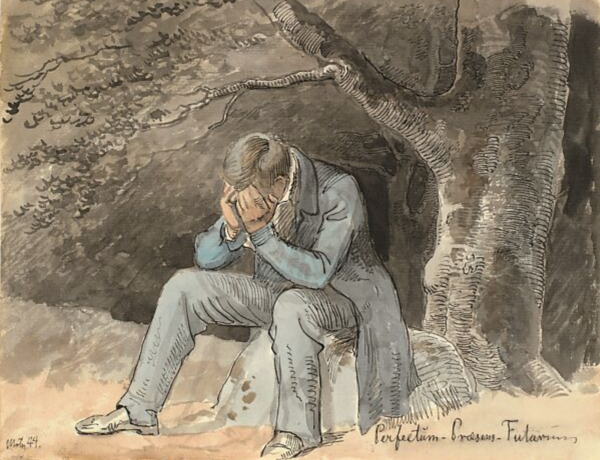
And speaking of melancholy Danes – this pen and ink and watercolor shows Kronberg Castle, home of Shakespeare’s Hamlet. It was built in the Renaissance and was an important coastal fortification. Here the beach, the brush and the bare trees are the focus, not the castle,
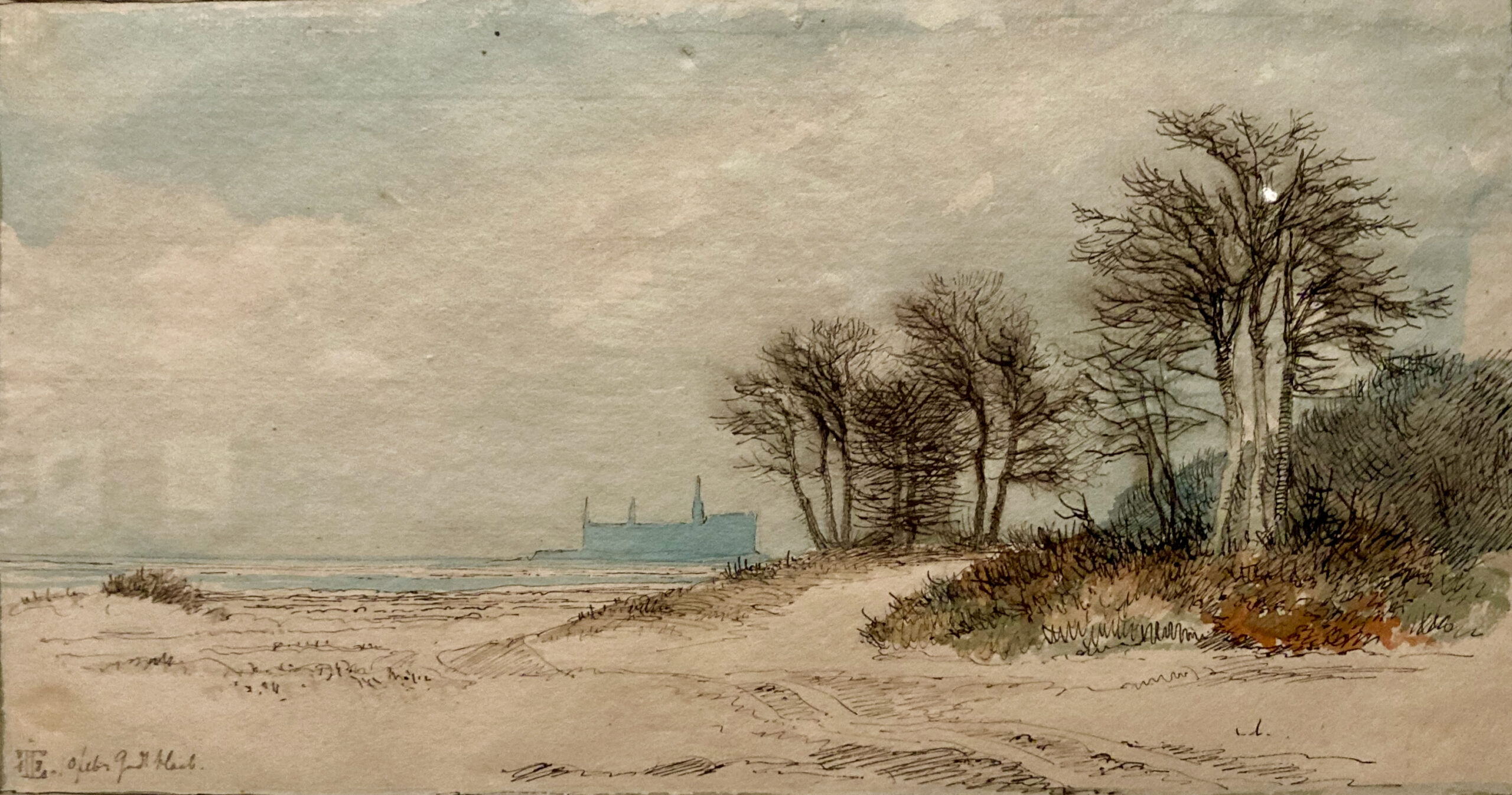
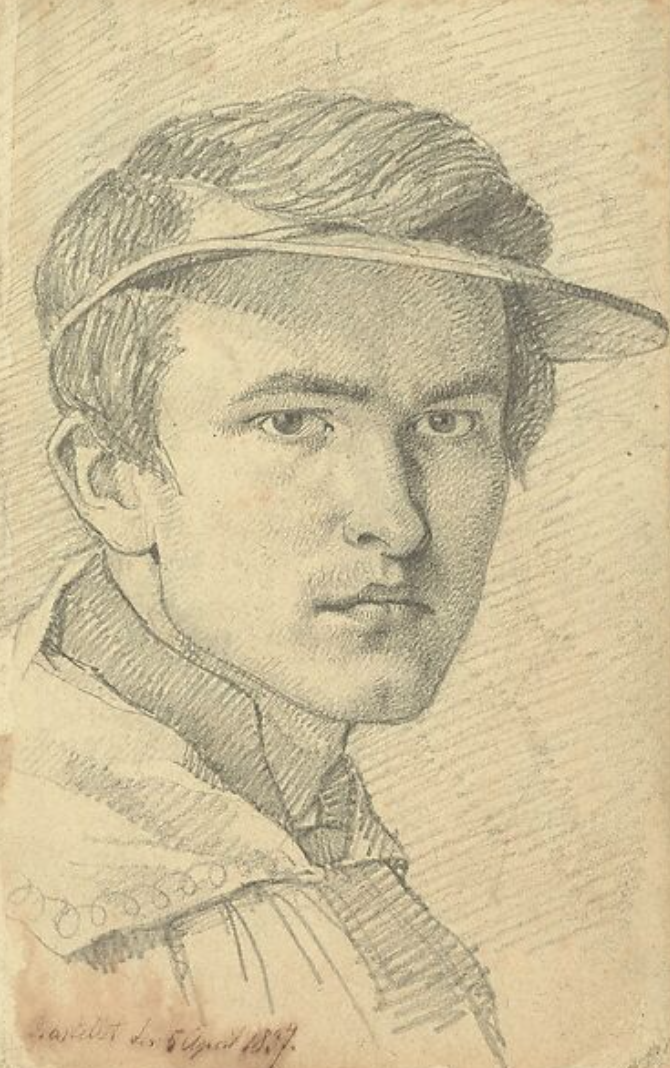
And this was one of several eye-catching interiors:
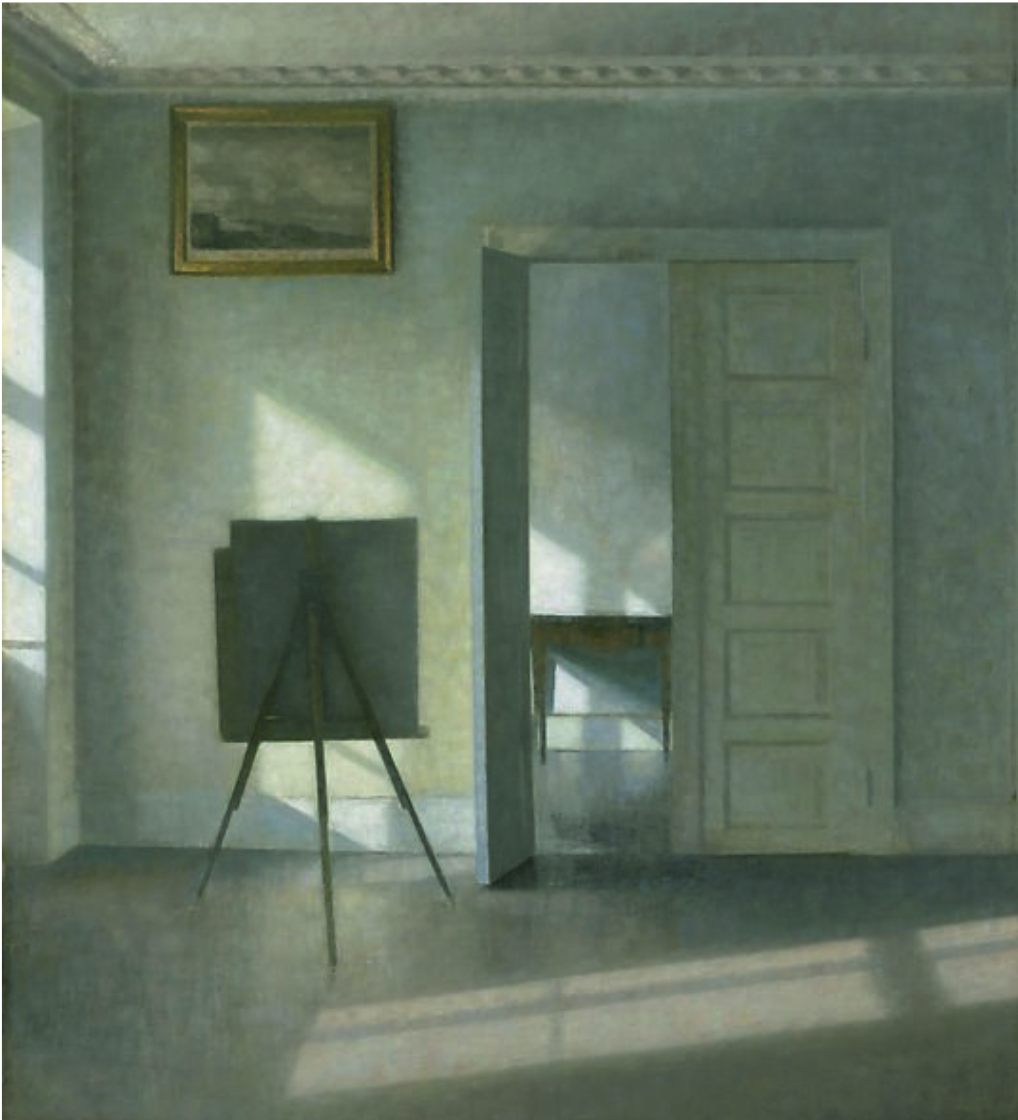
The featured image is a detail from Wreck on the Northern Beach, Sank on May 9, 1832 by Martinus Rørbye (Danish, Drammen 1803–1848 )1833
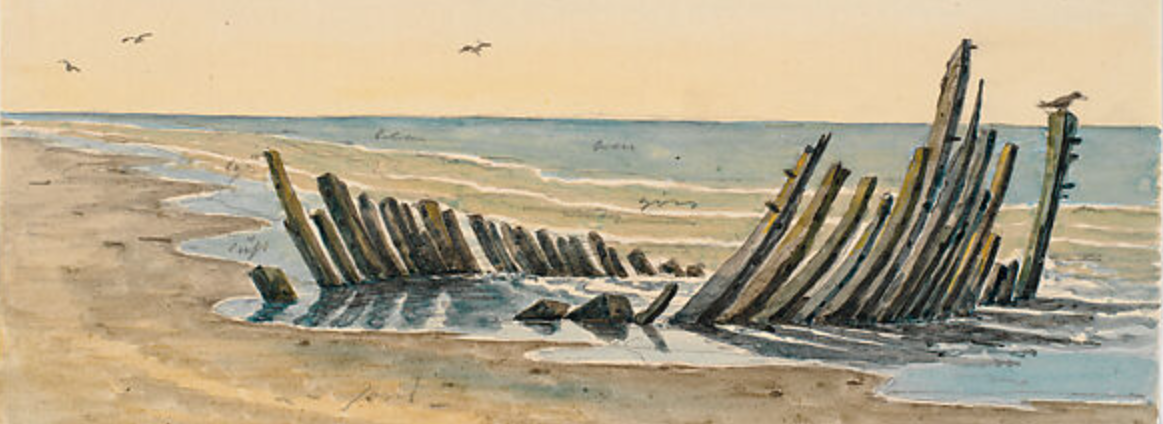
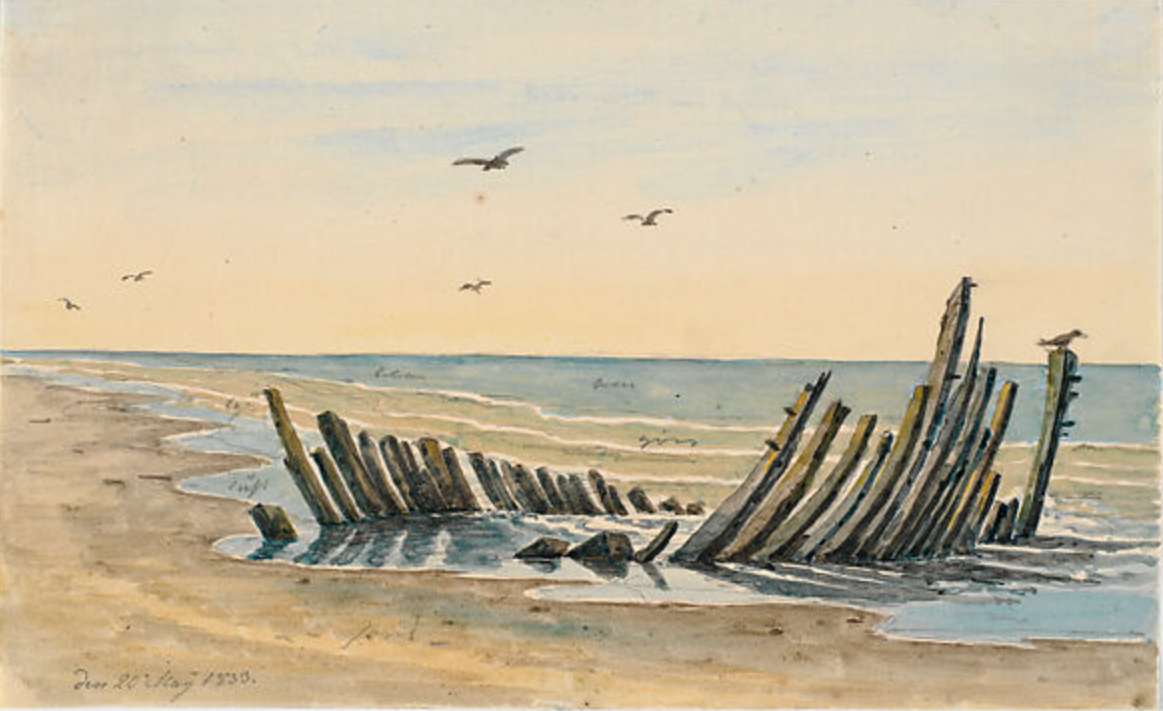


These are lovely pieces. I’m glad people are still doing and talking about fine art, despite the less than fine art being pushed.
There is a lot of it about – great fine art, I mean.
Love the dark harbour, the moon and the shining path of water.
Gwen.
I particularly liked the painting by Hammershøi with its multiple portals (window, door, sunshine on the floor outlining the window, canvas on easel) and views (through the door, in the painting on the wall). Clever stuff. I liked the character study too. And the landscape!
That interior really was rather a stunner. It’s large and dominates the wall where it’s displayed and really draws the eye although there are several other really excellent paintings and drawings alongside it. It has the qualities of feeling both very familiar yet also strange. It had me thinking of Hopper for example. And yet – that light!
An amazing stroll through Danish art. When we “flag” we have to find somewhere comforting to have some tea and possibly a slice of cake! Thanks for sharing these posts 😊🙋♂️
A nice cup of tea always refreshes! and revives And cake is good too.
Denmark fascinates me. Perhaps it’s the ancient Dane in me? I wish we were able to live there or at least that their social and community ethos was here in GB. Perhaps its the past despair pictured in your gallery shots that has engendered this. I am most part through a “The year of living Danishly” by Helen Russell. Loving it and so enlightening. Your blog enhances my read to which I will return tomorrow.
Wow! Living Danishly – an interesting connection.
And yes – any sense of community responsibility enacted as public policy and practice would be an improvement over rampant greed, selfishness, and individualism.
Beautiful accounts of a very big day. I love Hammerschoi. Must have seen his work on Denmark and bought a book of it. The light and colour of his solitary interiors is wonderful.
As so often – you are ahead of me!
Yes – light and muted colour. Amazing.
The beautiful use of light and the loneliness in these works are what come across so strongly to me. Thank you for taking us along on your art travels!
You have nailed it there.
Wow. More delightful art. My favorite this go round was the man under the tree. Awesome.
Sheila Morris´s last blog post ..waiting on the next thing smoking
Abject dejection portrayed!
These days I can only plan a single activity in a single day and not too many days running! I am stubborn and so resist the idea of a “walker”. Though I agreed to talk about one last year. I fear that to lose a battle would be to lose the war. I don’t believe in regret but if I had to do things again, I would have made a far greater effort to explore Europe and I would love to have seen Scandinavia. I know I would love it. I only got as far as a very brief fling with a young Swede. Sigh!
Agreed – one activity per week is quite enough!
And, well – a brief fling sounds like it has possible good memory potential.
But yes – in general – you are right. As the energy levels flag it’s hard not to think of what could/should/might have been. And living in an epidemic only makes it harder.
Still – think of the compensations! And the still available opportunities.
Coincidentally, I’ve just read a book about 19th century immigrants to America, including Danish immigrants who came here because of the upheavals in their country (and other reasons). It tells of their homesickness for, among other things, the “Danish beech forests” (a Danish national symbol, as you note). Fortunately, they didn’t have to deal with nearly the degree of prejudice experienced by Irish, Chinese, Polish, Mexican and immigrants of many other nationalities and cultures.
Interesting mistermuse. And now you have me curious about that book.
And of course, you are right about immigration. Curious now about your family’s story.
There was once an atrempted Danish colonisation effort in Maine. There was for a time an insular Danish community, but most Danes were happy to assimilate leaving only their names as legacies. The Swedes and Finns, meanwhile, held on to their identies.
Curious about your sources for this.
magnificent and melancholy; this made my day. I did enjoy the jaunty self portrait of the artist —